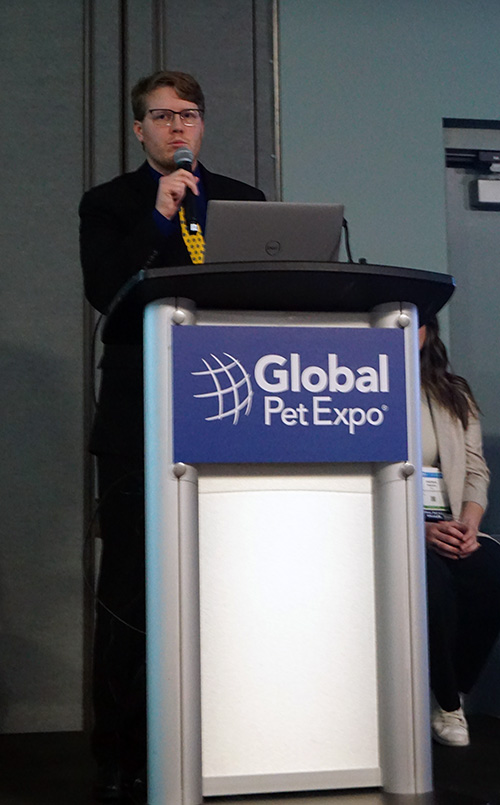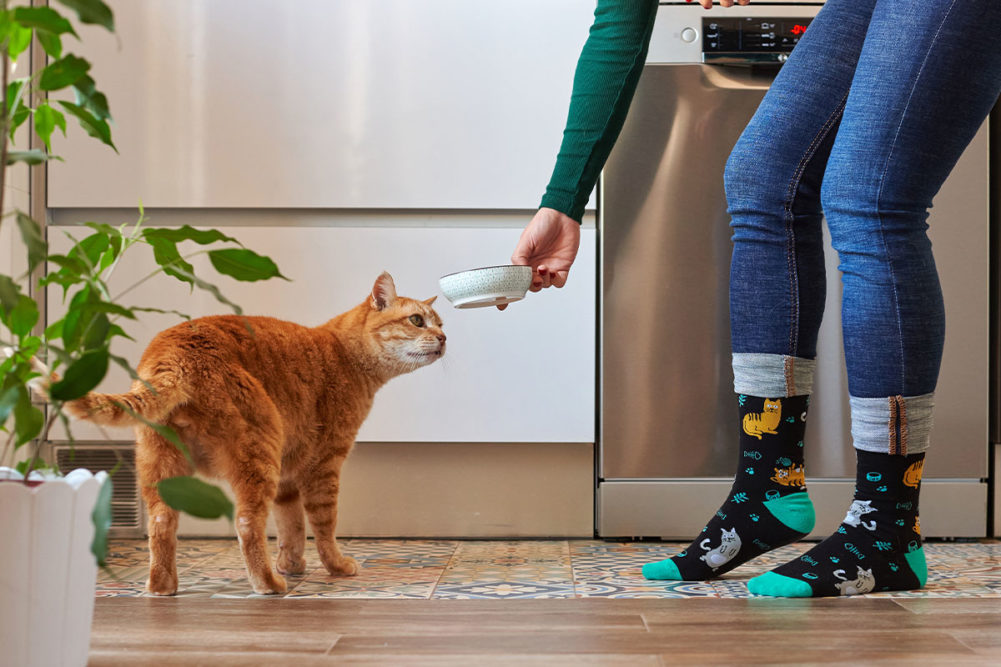ORLANDO, FLA. — The pet food and pet care industries have long been dubbed “recession-proof,” a belief that has permeated every pet product category as more consumers accept pets as part of their families. Despite this, inflation continues to loom over the industry, according to research from NielsenIQ.
Sam Smith, associated client director of pet manufacturing and CPG at NielsenIQ, discussed this, as well as other consumer trends set to continue in 2024, during the company’s presentation of its “State of Pet: The Full View of the Omni Pet Channel & Shopper” report on March 20 at Global Pet Expo 2024 in Orlando.
Inflation remains
According to Smith, pet care is among the few store departments witnessing higher-than-average levels of inflation, alongside dry grocery, baby care and bakery. During 2023, the average unit price of pet care items increased 9.1% from 2022. For reference, total store average unit price increased 5.9% compared to 2022.

Sam Smith, associate client director of pet manufacturing and CPG at NielsenIQ.
| Source: Sosland Publishing Co. / Nicole KerwinLooking at pet food in the total US pet retail space, NielsenIQ found that pet food dollar volume decreased 0.7% in October 2023 and further decreased 2.7% in January 2024. Additionally, pet food unit volume continues to trend down, decreasing 3.6% in October 2023 and another 6.7% in January 2024.
In the US xAOC and pet retail channels, the total pet food industry experienced a 9.5% increase in dollars in 2023 compared to 2022, but saw a 2.4% decrease in units during the same period.
“Pet care was one of the fastest growing, in terms of inflation and price increases that we have seen in the market,” Smith shared. “Units have been a struggle and that has been the story in pet for a while… Dollars are going up because you’re selling things at a higher price, but there’s been less overall sales.”
Though inflation continues to be a problem for the overall pet food industry, more premium categories are proving to be more immune. The fresh/frozen segment experienced dollar growth of 21.4% and unit growth of 14.3%, the meal enhancers category witnessed dollar growth of 11.9% and unit growth of 1.6%, and the freeze-dried segment experienced dollar growth of 21.7% and unit growth of 9.6% in 2023 compared to 2022.
“So, across the entire landscape units are declining, but if we zoom in on specific pockets, we can find areas where there’s actually genuine organic growth in consumption happening as consumers are flocking towards these more expensive need states,” Smith said. “These more expensive need states are bucking the trend by seeing unit growth.”
Fresh/frozen, meal enhancers and freeze-dried were the only pet food segments to witness both dollar and unit growth in 2023. Natural pet foods experienced dollar growth of 6.5%, but units decreased 5.2%; grain-free diets followed this same trend with dollar growth of 1.6% but units decreased 5.0%. On the flip side, dehydrated pet foods witnessed a 1.3% decrease in dollars, but a 3.1% increase in units in 2023 compared to 2022.
Continued innovation
Despite inflation, companies continue to release new innovations, aiming to capture the eyes of consumers. According to Smith, the pet supplies category overall sees significantly more new product launches compared to pet food and pet treatments. However, new pet food products contribute much more to dollar sales year-over-year.
Sixty-nine percent of new products launched over the last 52 weeks ended Dec. 30, 2023, were pet supplies, whereas only 28% were pet foods. Looking at dollars shows a different story, as 63% of dollars from new UPCs came from new pet food products, whereas only 34% came from new pet supplies products.
“Pet food new launches are really where the dollars are coming from — that’s where true innovation is succeeding,” Smith detailed. “We've all seen that over time, supplements have been huge, toppers have been huge, freeze-dried, dehydrated, etc. All the different type of niche [nutrition products] and alternative foods… are being launched and consumers are looking for those.
“It’s making pet food a very successful place to launch new items and to test innovation,” he added.
Among these innovations, dog food, pet toys, dog collars and leashes dominate the category with most new products launched year after year, and dog food consistently holds the top spot in terms of dollar sales, according to NielsenIQ.
Demographic trends
Smith also shared new details on shifting pet product consumer demographics, revealing that younger generations and Asian households are beginning to spend more.
Examining buy rate generationally, NielsenIQ found that consumers ages 18 to 24 (mostly belonging to Gen Z) increased their average buy rate 10.5% in 2023 compared to 2022, the highest of all other age cohorts.
“We are now seeing the youngest generation, Gen Z, up 10.5%, partially due to just age requirements of being in a panel,” Smith said. “It’s been hard to track Gen Zers, but as time has gone on, we’ve been able to get more and more of them into our panel to get a greater representation. We’re now seeing that their spend rate is actually outpacing most of the other generations, other than Millennials.”
Breaking this down by ethnicity, NielsenIQ found that Asian households had the largest increase in buy rate of 9.4% in 2023, followed by white households at 8.2% and Black households at 7.3%.
Learn more about the omnichannel trend from NielsenIQ.
Read more of our Global Pet Expo coverage.





